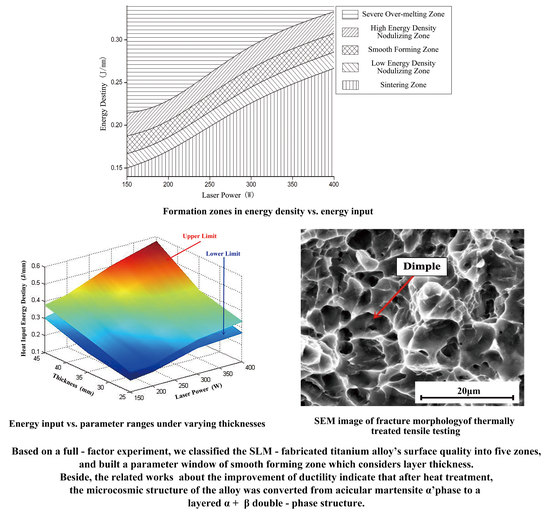Research on Selective Laser Melting of Ti6Al4V: Surface Morphologies, Optimized Processing Zone, and Ductility Improvement Mechanism
Abstract
:1. Introduction
2. Experimental Methods
2.1. Equipment and Material
2.2. Experimental Methods
2.2.1. Determination of Range for the Fabricating Parameters
2.2.2. Testing Methods
3. Results and Discussions
3.1. Classification of Surface Morphology
3.2. Fabricating Parameter Optimization Window
3.3. Analysis of Mechanical Properties
3.3.1. Tensile Properties
3.3.2. Micro-Hardness
3.4. Mechanical Evolution Mechanism
3.5. Discussion
4. Conclusions
- From the perspective of surface morphology, a full-factor experiment was performed to classify the SLM-fabricated titanium alloy into five zones: severe over-melting zone, high-energy density nodulizing zone, smooth forming zone, low-energy density nodulizing zone, and sintering zone.
- An optimal parameter window was established for the smooth forming zone. It was found that for the linear energy density of the smooth forming zone, the upper and lower limits increase by a large margin. Moreover, the two limits also increase considerably with a rise in layer thickness. It refutes the conclusion in some studies that there is a linear relationship between energy input and quality of fabricated parts.
- The SLM-fabricated titanium alloy was annealed using an appropriate heat treatment. After heat treatment, the structure of the alloy was converted from acicular martensite α’ phase to a layered α+β double-phase structure. Fracture type was also converted from quasi-cleavage fracture to ductile fracture. This is the reason for improvement in ductility of SLM-fabricated titanium alloy.
Supplementary Materials
Author Contributions
Funding
Conflicts of Interest
References
- Leyens, C.; Peters, M. Titanium and Titanium Alloys: Fundamentals and Applications; Wiley: New York, NY, USA, 2003. [Google Scholar]
- Santos, L.V.; Trava-Airoldi, V.J.; Corat, E.J.; Nogueira, J.; Leite, N.F. DLC cold welding prevention films on a Ti6Al4V alloy for space applications. Surf. Coat. Technol. 2006, 200, 2587–2593. [Google Scholar] [CrossRef]
- Long, M.; Rack, H. Titanium alloys in total joint replacement—A materials science perspective. Biomaterials 1998, 19, 1621–1639. [Google Scholar] [CrossRef]
- Khosroshahi, M.E.; Mahmoodi, M.; Tavakoli, J. Characterization of Ti6Al4V implant surface treated by nd:yag laser and emery paper for orthopaedic applications. Appl. Surf. Sci. 2007, 253, 8772–8781. [Google Scholar] [CrossRef]
- Zhuang, J.R.; Lee, Y.T.; Hsieh, W.H.; Yang, A.-S. Determination of melt pool dimensions using DOE-FEM and RSM with process window during SLM of Ti6Al4V powder. Opt. Laser Technol. 2018, 103, 59–76. [Google Scholar] [CrossRef]
- Sun, J.; Yang, Y.; Wang, D. Mechanical properties of a Ti6Al4V porous structure produced by selective laser melting. Mater. Des. 2013, 49, 545–552. [Google Scholar] [CrossRef]
- Yadroitsev, I.; Krakhmalev, P.; Yadroitsava, I. Selective laser melting of Ti6Al4V alloy for biomedical applications: Temperature monitoring and microstructural evolution. J. Alloys Compd. 2014, 583, 404–409. [Google Scholar] [CrossRef]
- Gu, D. Laser Additive Manufacturing of High-Performance Materials; Springer: Berlin/Heidelberg, Germany, 2015. [Google Scholar]
- Wang, D.; Wang, Y.; Wu, S.; Lin, H.; Yang, Y.; Fan, S.; Gu, C.; Wang, J.; Song, C. Customized a Ti6Al4V bone plate for complex pelvic fracture by selective laser melting. Materials 2017, 10, 35. [Google Scholar] [CrossRef] [PubMed]
- Zhang, L.-C.; Attar, H. Selective laser melting of titanium alloys and titanium matrix composites for biomedical applications: A review. Adv. Eng. Mater. 2015, 18, 463–475. [Google Scholar] [CrossRef]
- Brandt, M.; Sun, S.J.; Leary, M.; Feih, S.; Elambasseril, J.; Liu, Q.C. High-value SLM aerospace components: From design to manufacture. Adv. Mater. 2013, 633, 135–147. [Google Scholar] [CrossRef]
- Traini, T.; Mangano, C.; Sammons, R.L.; Mangano, F.; Macchi, A.; Piattelli, A. Direct laser metal sintering as a new approach to fabrication of an isoelastic functionally graded material for manufacture of porous titanium dental implants. Dent. Mater. 2008, 24, 1525–1533. [Google Scholar] [CrossRef] [PubMed]
- Wehmöller, M.; Warnke, P.H.; Zilian, C.; Eufinger, H. Implant design and production—A new approach by selective laser melting. Int. Congr. Ser. 2005, 1281, 690–695. [Google Scholar] [CrossRef]
- Kawase, M.; Hayashi, T.; Asakura, M.; Mieki, A.; Fuyamada, H.; Sassa, M.; Nakano, S.; Hagiwara, M.; Shimizu, T.; Kawai, T. Cell proliferation ability of mouse fibroblast-like cells and osteoblast-like cells on a Ti-6Al-4V alloy film produced by selective laser melting. Mater. Sci. Appl. 2014, 5, 475–483. [Google Scholar] [CrossRef]
- Wang, J.H.; Cheng, J.; Li, Y.X.; Bai, P.-K. Influence of Laser Scan Speed on Density and Mechanical Properties of a Ti6Al4V Part Produced by Means of Selective Laser Melting (SLM). Lasers Eng. 2012, 23, 395–401. [Google Scholar]
- Thijs, L.; Verhaeghe, F.; Craeghs, T.; Humbeeck, J.V.; Kruth, J.-P. A study of the microstructural evolution during selective laser melting of Ti–6Al–4V. Acta Mater. 2010, 58, 3303–3312. [Google Scholar] [CrossRef]
- Song, B.; Dong, S.; Liao, H.; Coddet, C. Process parameter selection for selective laser melting of Ti6Al4V based on temperature distribution simulation and experimental sintering. Int. J. Adv. Manuf. Technol. 2011, 61, 967–974. [Google Scholar] [CrossRef]
- Facchini, L.; Magalini, E.; Robotti, P.; Molinari, A.; Höges, S.; Wissenbach, K. Ductility of a Ti-6Al-4V alloy produced by selective laser melting of prealloyed powders. Rapid Prototyp. J. 2010, 16, 450–459. [Google Scholar] [CrossRef]
- Huang, Q.; Liu, X.; Yang, X.; Zhang, R.; Shen, Z.; Feng, Q. Specific heat treatment of selective laser melted Ti–6Al–4V for biomedical applications. Front. Mater. Sci. 2015, 9, 373–381. [Google Scholar] [CrossRef]
- Vrancken, B.; Thijs, L.; Kruth, J.P.; Van Humbeeck, J. Heat treatment of Ti6Al4V produced by Selective Laser Melting: Microstructure and mechanical properties. J. Alloys Compd. 2012, 541, 177–185. [Google Scholar] [CrossRef]
- Wang, D.; Wu, S.; Fu, F.; Song, C. Mechanisms and characteristics of spatter generation in SLM processing and its effect on the properties. Mater. Des. 2017, 117, 121–130. [Google Scholar] [CrossRef]
- Wang, M.; Wu, Y.; Lu, S.; Chen, T.; Zhao, Y.; Chen, H.; Tang, Z. Fabrication and characterization of selective laser melting printed Ti–6Al–4V alloys subjected to heat treatment for customized implants design. Prog. Nat. Sci. Mater. Int. 2016, 26, 671–677. [Google Scholar] [CrossRef]
- Cain, V.; Thijs, L.; Van Humbeeck, J.; Van Hooreweder, B.; Knutsen, R. Crack propagation and fracture toughness of Ti6Al4V alloy produced by selective laser melting. Addit. Manuf. 2015, 5, 68–76. [Google Scholar] [CrossRef]
- Simchi, A.; Petzoldt, F.; Pohl, H. On the development of direct metal laser sintering for rapid tooling. J. Mater. Process. Technol. 2003, 141, 319–328. [Google Scholar] [CrossRef]
- Simchi, A. Direct laser sintering of metal powders: Mechanism, kinetics and microstructural features. Mater. Sci. Eng. A 2006, 428, 148–158. [Google Scholar] [CrossRef]
- Yadroitsev, I.; Bertrand, P.; Smurov, I. Parametric analysis of the selective laser melting process. Appl. Surf. Sci. 2007, 253, 8064–8069. [Google Scholar] [CrossRef]
- Wong, M.; Owen, I.; Sutcliffe, C.J.; Puri, A. Convective heat transfer and pressure losses across novel heat sinks fabricated by selective laser melting. Int. J. Heat Mass Transf. 2009, 52, 281–288. [Google Scholar] [CrossRef]
- Rehme, O.; Emmelmann, C. Reproducibility for properties of selective laser melting products. In Proceedings of the Third International LT-Conference on Lasers in Manufacturing, Munich, Germany, 22–25 June 2005; pp. 1–6. [Google Scholar]
- Gu, D.; Hagedorn, Y.-C.; Meiners, W.; Meng, G.; Batista, R.J.S.; Wissenbach, K.; Poprawe, R. Densification behavior, microstructure evolution, and wear performance of selective laser melting processed commercially pure titanium. Acta Mater. 2012, 60, 3849–3860. [Google Scholar] [CrossRef]
- Li, R.; Liu, J.; Shi, Y.; Wang, L.; Jiang, W. Balling behavior of stainless steel and nickel powder during selective laser melting process. Int. J. Adv. Manuf. Technol. 2011, 59, 1025–1035. [Google Scholar] [CrossRef]
- Wu, S.Q.; Lu, Y.J.; Gan, Y.L.; Huang, T.T.; Zhao, C.Q.; Lin, J.J.; Guo, S.; Lin, J.X. Microstructural evolution and microhardness of a selective-laser-melted Ti–6Al–4V alloy after post heat treatments. J. Alloys Compd. 2016, 672, 643–652. [Google Scholar] [CrossRef]
- Vilaro, T.; Colin, C.; Bartout, J.D. As-fabricated and heat-treated microstructures of the Ti-6Al-4V alloy processed by selective laser melting. Met. Mater. Trans. Coruña 2011, 42, 3190–3199. [Google Scholar] [CrossRef]
- Pederson, R.; Warren, P.R. Microstructure and Phase Transformation of Ti-6Al-4V. Department of Applied Physics and Mechanical Engineering, Lulea University of Technology. Unpublished work. 2002. [Google Scholar]
- Sallica-Leva, E.; Caram, R.; Jardini, A.L.; Fogagnolo, J.B. Ductility improvement due to martensite α′ decomposition in porous Ti–6Al–4V parts produced by selective laser melting for orthopedic implants. J. Mech. Behav. Biomed. Mater. 2016, 54, 149–158. [Google Scholar] [CrossRef] [PubMed]
- Razavi, S.M.J.; Ferro, P.; Berto, F. Fatigue Assessment of Ti–6Al–4V Circular Notched Specimens Produced by Selective Laser Melting. Strength Mater. 2017, 7, 1–9. [Google Scholar]
- Razavi, S.M.J.; Ferro, P.; Berto, F.; Torgersen, J. Fatigue strength of blunt V-notched specimens produced by selective laser melting of Ti-6Al-4V. Theor. Appl. Fract. Mech. 2017. [CrossRef]
- Spears, T.G.; Gold, S.A. In-process sensing in selective laser melting (SLM) additive manufacturing. Mater. Manuf. Innov. 2016, 5. [Google Scholar] [CrossRef]
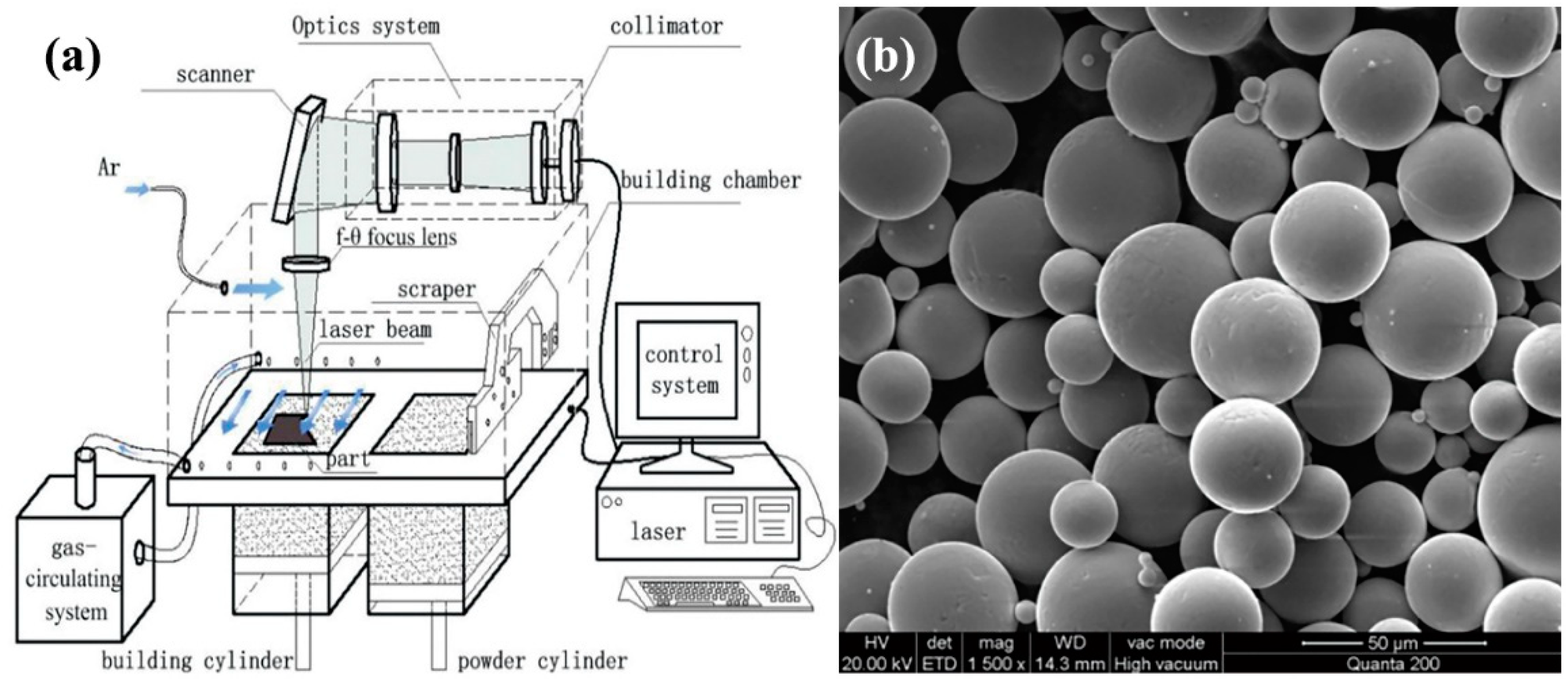
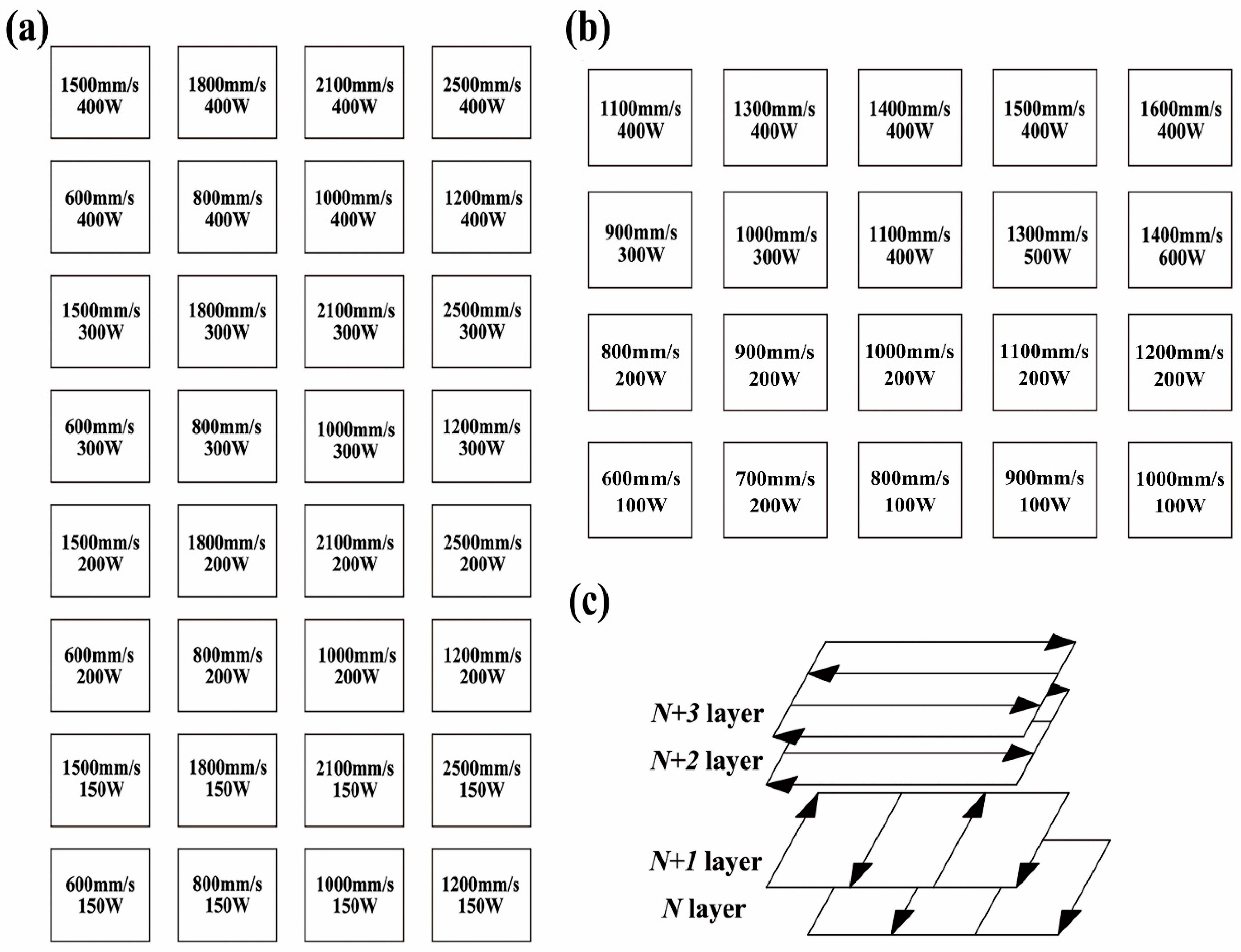

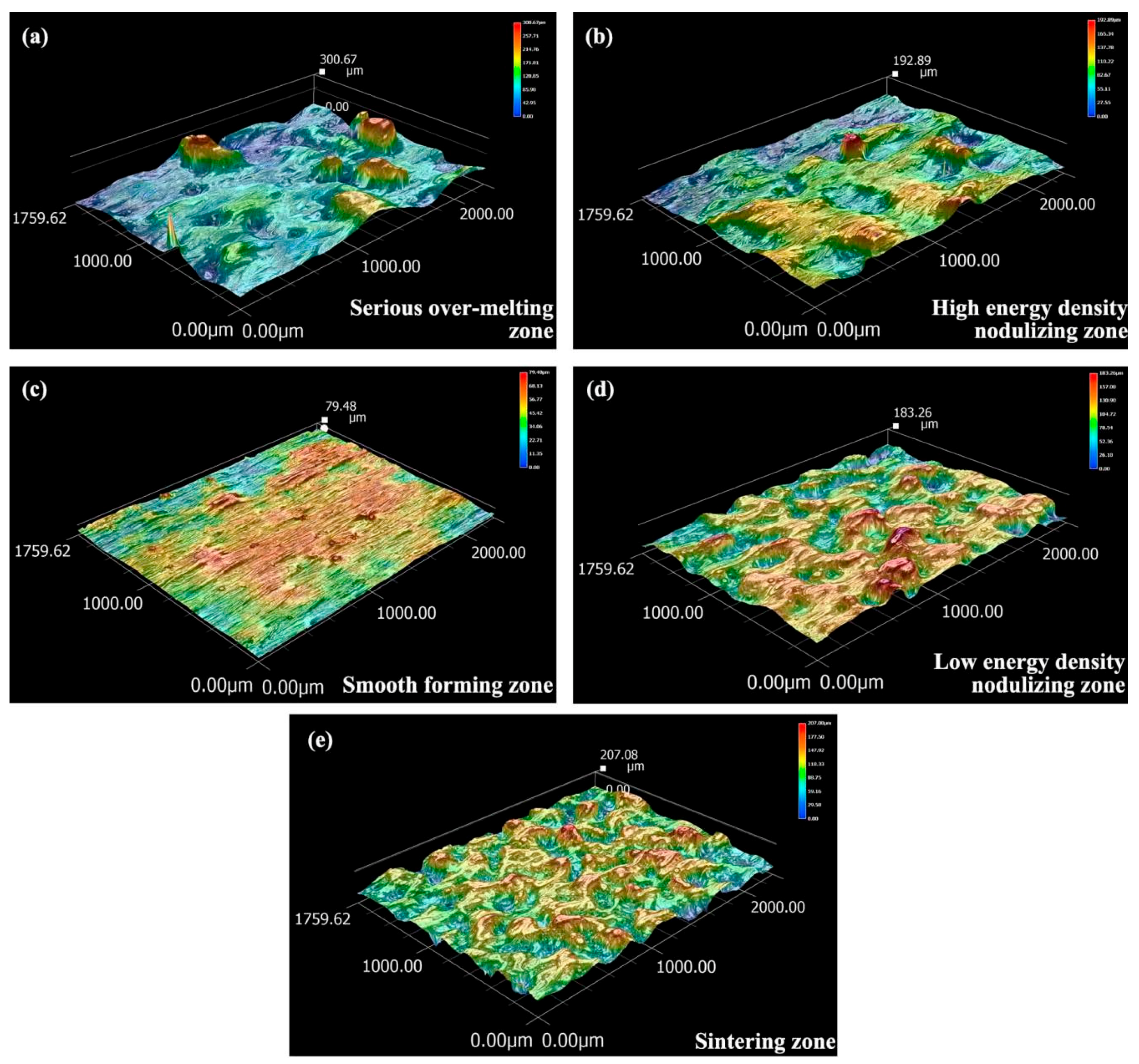
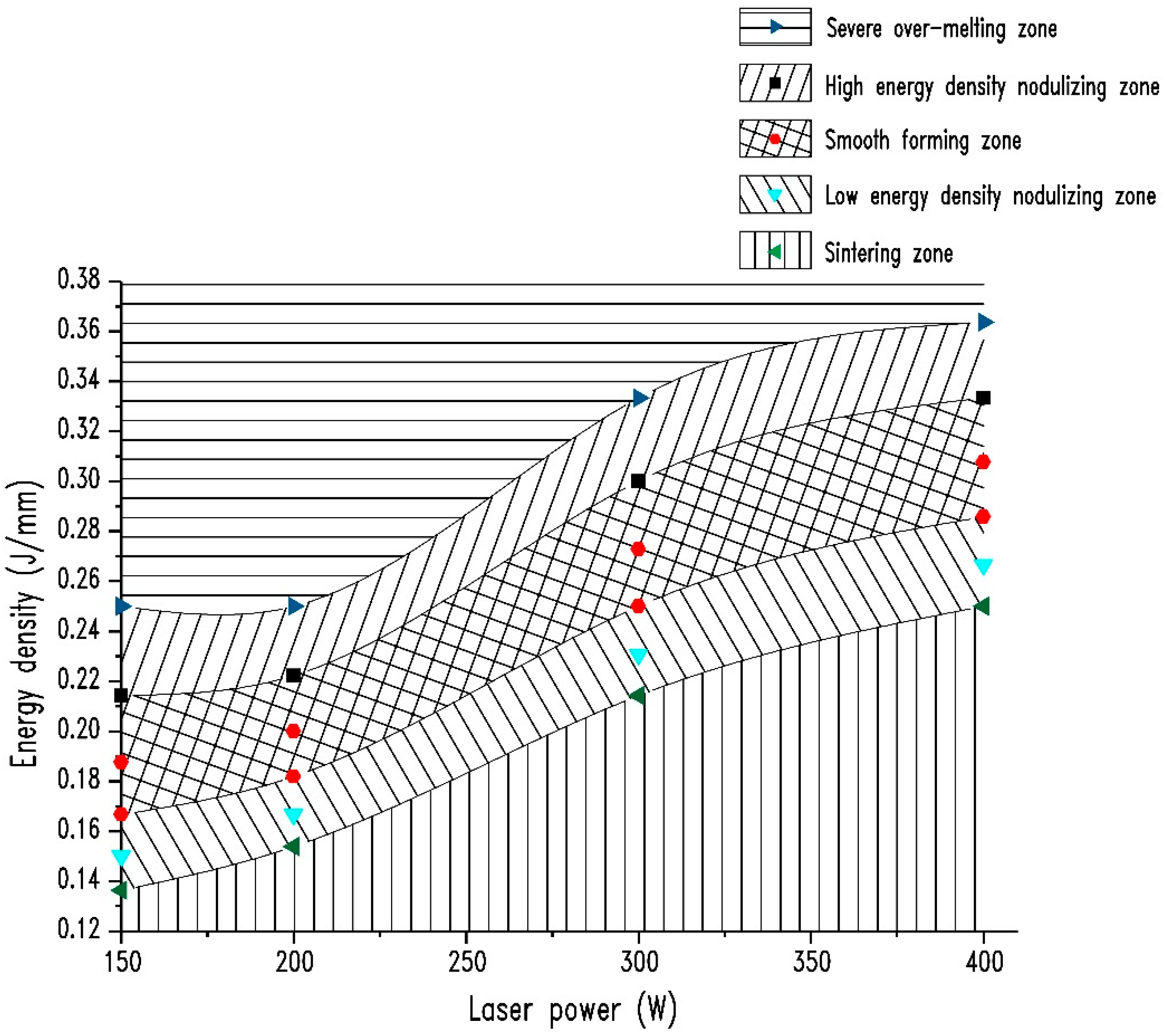
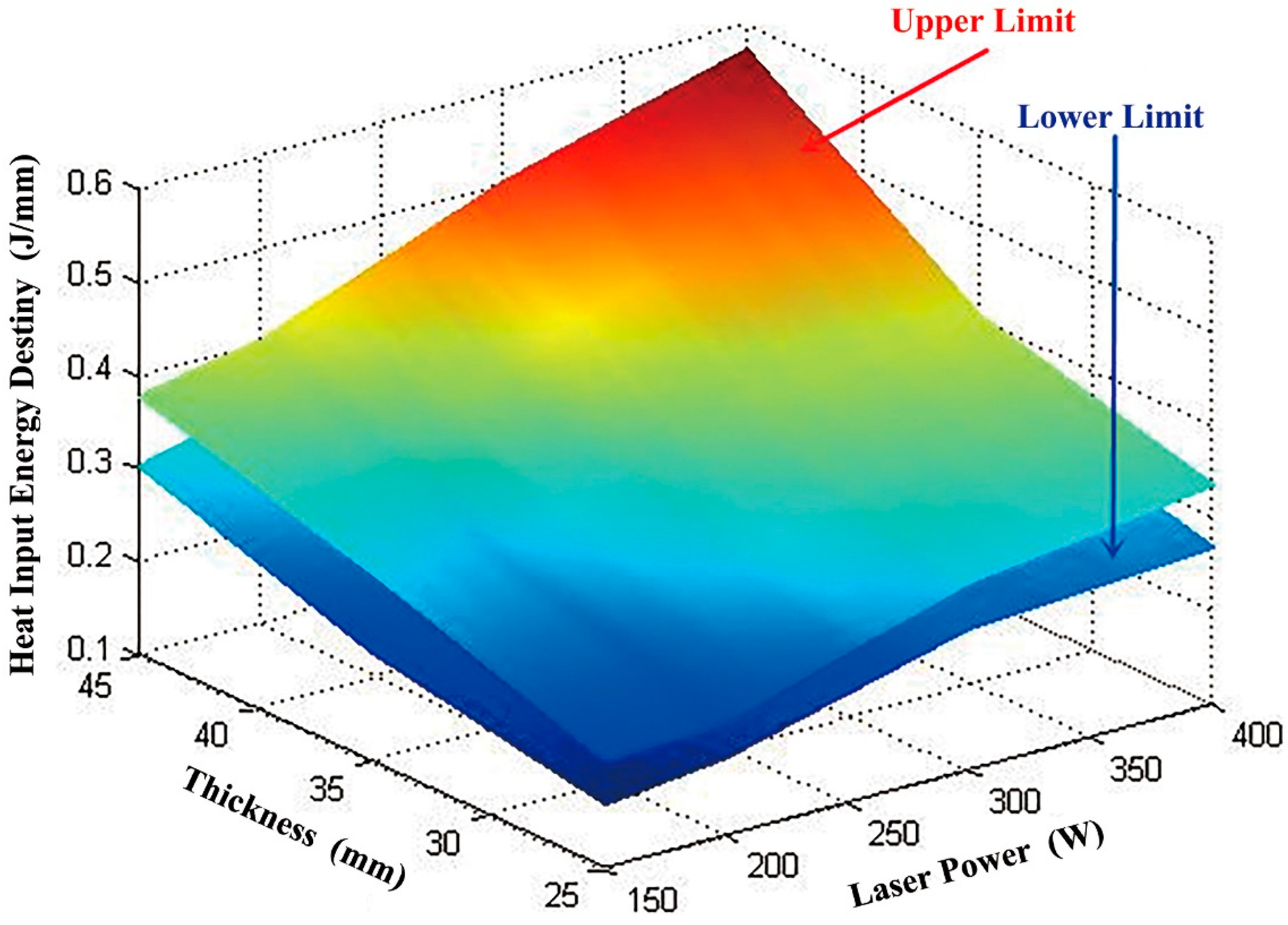



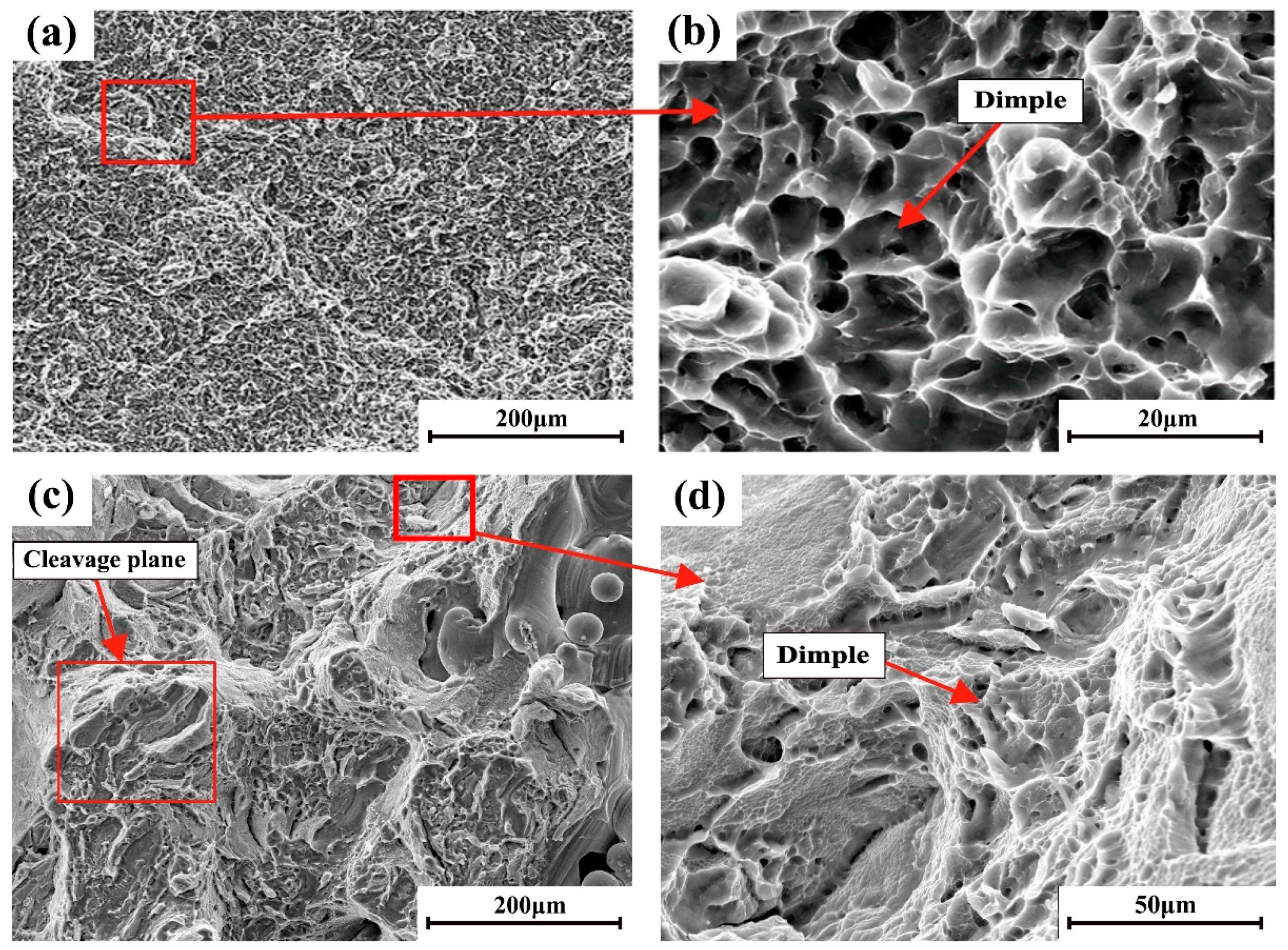


| Manufacturing Method | Tensile Strength/MPa | Elongation/% | Notes |
|---|---|---|---|
| SLM | 1240.5 ± 7.7 | 5.79 ± 0.29 | - |
| SLM (Reference) | 1267.0 ± 5 | 7.28 ± 1.12 | [20] |
| SLM + Heat Treatment | 1068.3 ± 26.7 | 10.28 ± 0.20 | 840 °C for 3 h + tempering for 2 h + furnace cooling to 450 °C +air cooling |
| SLM + Heat Treatment (Reference one) | 1082.0 ± 34.0 | 9.04 ± 2.03 | 705 °C for 3 h + air cooling [20] |
| SLM + Heat Treatment (Reference two) | 948.0 ± 27.0 | 13.59 ± 0.32 | 940 °C for 1 h + tempering for 2 h at 650 °C + air cooling [20] |
| Ti6Al4V Alloy Forgings | ≥895.0 | ≥10.00 | ASTM B381-05 |
| Ti6Al4V Alloy for Surgical Implant Application | ≥860.0 | ≥10.00 | ASTM F136-12 |
© 2018 by the authors. Licensee MDPI, Basel, Switzerland. This article is an open access article distributed under the terms and conditions of the Creative Commons Attribution (CC BY) license (http://creativecommons.org/licenses/by/4.0/).
Share and Cite
Wang, D.; Dou, W.; Yang, Y. Research on Selective Laser Melting of Ti6Al4V: Surface Morphologies, Optimized Processing Zone, and Ductility Improvement Mechanism. Metals 2018, 8, 471. https://doi.org/10.3390/met8070471
Wang D, Dou W, Yang Y. Research on Selective Laser Melting of Ti6Al4V: Surface Morphologies, Optimized Processing Zone, and Ductility Improvement Mechanism. Metals. 2018; 8(7):471. https://doi.org/10.3390/met8070471
Chicago/Turabian StyleWang, Di, Wenhao Dou, and Yongqiang Yang. 2018. "Research on Selective Laser Melting of Ti6Al4V: Surface Morphologies, Optimized Processing Zone, and Ductility Improvement Mechanism" Metals 8, no. 7: 471. https://doi.org/10.3390/met8070471




